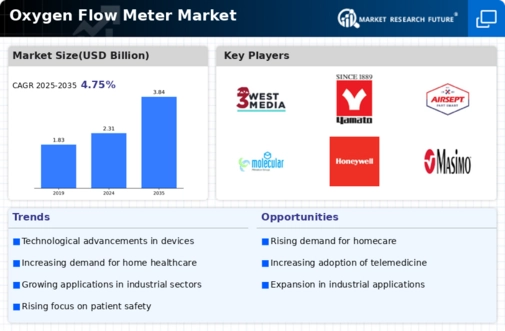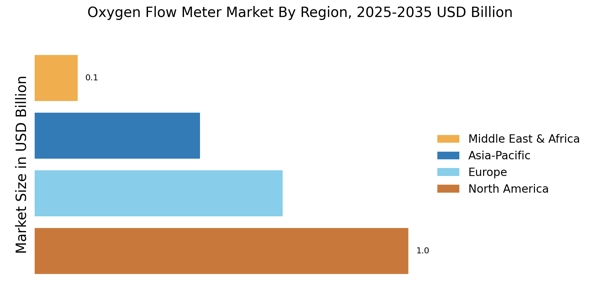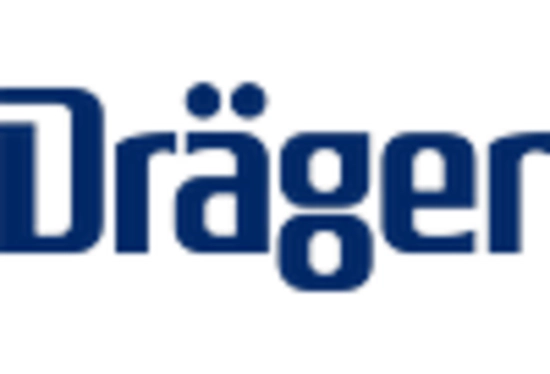Growing Geriatric Population
The aging population is a significant factor influencing the Oxygen Flow Meter Market. As individuals age, the likelihood of developing respiratory conditions increases, thereby driving the demand for oxygen therapy. The World Health Organization projects that the number of people aged 60 years and older will double by 2050, reaching approximately 2 billion. This demographic shift necessitates the availability of effective oxygen delivery systems, including flow meters. Healthcare providers are likely to invest in these devices to cater to the needs of the elderly, which could result in a substantial market growth of around 6% per year as the demand for home healthcare solutions rises.
Regulatory Support for Medical Devices
Regulatory support for medical devices is a crucial driver for the Oxygen Flow Meter Market. Governments and health authorities are implementing policies that facilitate the approval and distribution of innovative medical technologies. This regulatory environment encourages manufacturers to invest in research and development, leading to the introduction of advanced oxygen flow meters. Additionally, streamlined approval processes can enhance market entry for new products, fostering competition and innovation. As a result, the market is likely to experience a growth trajectory of around 5% annually, driven by the introduction of new and improved oxygen flow meters that meet regulatory standards.
Technological Innovations in Medical Devices
Technological advancements in medical devices are transforming the Oxygen Flow Meter Market. Innovations such as digital flow meters, portable devices, and integration with telehealth platforms enhance the functionality and usability of oxygen flow meters. These advancements allow for real-time monitoring and data collection, which can improve patient outcomes. The introduction of smart oxygen flow meters, equipped with features like Bluetooth connectivity and mobile app integration, is likely to attract a broader user base. As healthcare systems increasingly prioritize patient-centered care, the demand for technologically advanced oxygen flow meters is expected to surge, potentially leading to a market expansion of around 8% annually.
Increasing Prevalence of Respiratory Diseases
The rising incidence of respiratory diseases, such as chronic obstructive pulmonary disease (COPD) and asthma, is a primary driver for the Oxygen Flow Meter Market. According to health statistics, respiratory diseases account for a significant portion of global morbidity and mortality. This trend necessitates the use of oxygen flow meters for effective management and treatment of patients. As healthcare providers increasingly adopt these devices to monitor and deliver oxygen therapy, the demand for oxygen flow meters is expected to rise. The market is projected to grow at a compound annual growth rate (CAGR) of approximately 7% over the next few years, reflecting the urgent need for accurate and reliable oxygen delivery systems in clinical settings.
Rising Awareness of Home Healthcare Solutions
There is a growing awareness and preference for home healthcare solutions, which is positively impacting the Oxygen Flow Meter Market. Patients and caregivers are increasingly seeking ways to manage health conditions at home, particularly for chronic respiratory diseases. The convenience and comfort of receiving oxygen therapy at home drive the demand for portable and user-friendly oxygen flow meters. Market Research Future indicates that the home healthcare segment is expected to witness a growth rate of approximately 9% in the coming years. This trend reflects a shift in healthcare delivery models, emphasizing the importance of accessible and efficient oxygen delivery systems for patients outside traditional clinical settings.

















Leave a Comment